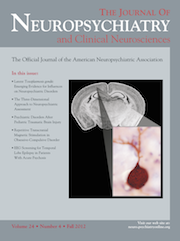Is AlPO4-5 Nano-Zeolite Effective for Preventing Alzheimer’s Disease in Humans?
To the Editor: Copper toxicity may occur after ingestion of acidic foods that are cooked in copper cookware, or exposure to excess copper from environmental sources.1 There is a variable amount of copper leaching from copper plumbing, and some research indicates that about 31% of U.S. homes have drinking water containing more than 0.1 ppm copper, the amount that caused Alzheimer’s Disease (AD) in animal models. The amount of free copper in AD patients is inversely correlated with their cognitive status.2
On the other hand, zeolites are used in many in-vitro and in-vivo experiments for trapping various substances. One study has shown that the zeolites may interact with human bile and reduce its components;3 another showed that zeolite-Y powders are activated with Fe3+–DETC complexes that are capable of trapping NO radicals in humans;4 and the natural zeolites clinoptilolite and bentonite had good performance in removing heavy metals from aqueous solutions.1
Based on these processes, we hypothesize that some AlPO4-5 zeolites can be used to adsorb heavy metals such as Cu. This zeolite can be synthesized in the laboratory with the hydrothermal method. In this method, after preparation of a homogenized mixture, the gel will be transferred to a Teflon-lined steel autoclave. The autoclave is put into a preheated oven for crystallization. The product is obtained by a Buchner vacuum-filtration funnel, washed with deionized water, and dried at room temperature.5
It seems that if this zeolite is safe for humans, we can use it as a dietary supplement in order to decrease the risk of AD. Surely, clinical data are needed to show its safety.
1 : Removal of Pb(II) from aqueous solutions by using clinoptilolite and bentonite as adsorbents. Desalination 2007; 210:248–256Crossref, Google Scholar
2 : Copper toxicity in the general population. Clin Neurophysiol 2010; 121:459–460Crossref, Medline, Google Scholar
3 : Human bile sorption by cancrinite-type zeolites. Mater Sci Eng C 2009; 29:350–355Crossref, Google Scholar
4 : NO trapping in biological systems with a functionalized zeolite network. Nitric Oxide 2006; 15:233–240Crossref, Medline, Google Scholar
5 : Fabrication and characterization of AlPO4-5 nanozeolites: effect of hydrothermal temperature and duration. J Ceram Proc Res 2011; 67:3023–3029Google Scholar



